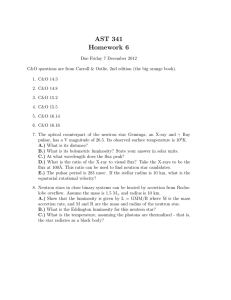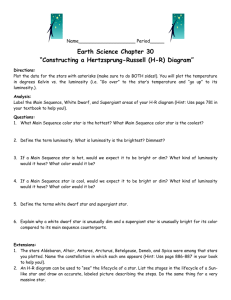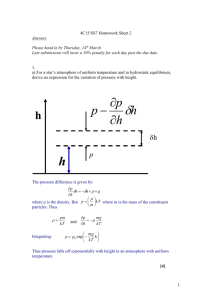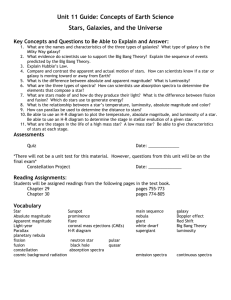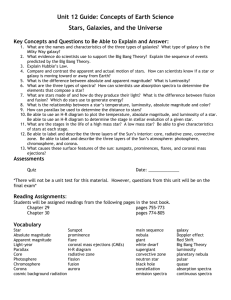Stellar Evolution Worksheet: H-R Diagrams & Star Life Cycles
advertisement
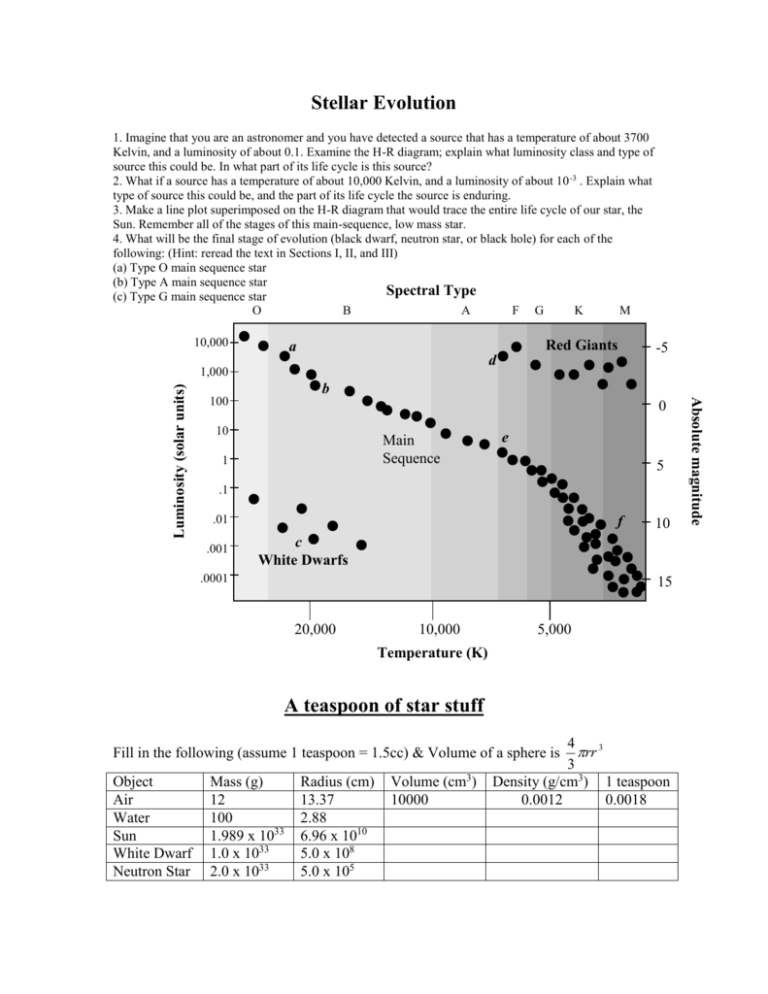
Stellar Evolution 1. Imagine that you are an astronomer and you have detected a source that has a temperature of about 3700 Kelvin, and a luminosity of about 0.1. Examine the H-R diagram; explain what luminosity class and type of source this could be. In what part of its life cycle is this source? 2. What if a source has a temperature of about 10,000 Kelvin, and a luminosity of about 10 -3 . Explain what type of source this could be, and the part of its life cycle the source is enduring. 3. Make a line plot superimposed on the H-R diagram that would trace the entire life cycle of our star, the Sun. Remember all of the stages of this main-sequence, low mass star. 4. What will be the final stage of evolution (black dwarf, neutron star, or black hole) for each of the following: (Hint: reread the text in Sections I, II, and III) (a) Type O main sequence star (b) Type A main sequence star Spectral Type (c) Type G main sequence star O B A F G K M 10,000 Red Giants a d b 100 0 10 Main Sequence 1 e 5 .1 .01 .001 f 10 c White Dwarfs .0001 15 20,000 10,000 5,000 Temperature (K) A teaspoon of star stuff 4 rr 3 3 Density (g/cm3) 1 teaspoon 0.0012 0.0018 Fill in the following (assume 1 teaspoon = 1.5cc) & Volume of a sphere is Object Air Water Sun White Dwarf Neutron Star Mass (g) 12 100 1.989 x 1033 1.0 x 1033 2.0 x 1033 Radius (cm) 13.37 2.88 6.96 x 1010 5.0 x 108 5.0 x 105 Volume (cm3) 10000 Absolute magnitude Luminosity (solar units) 1,000 -5
